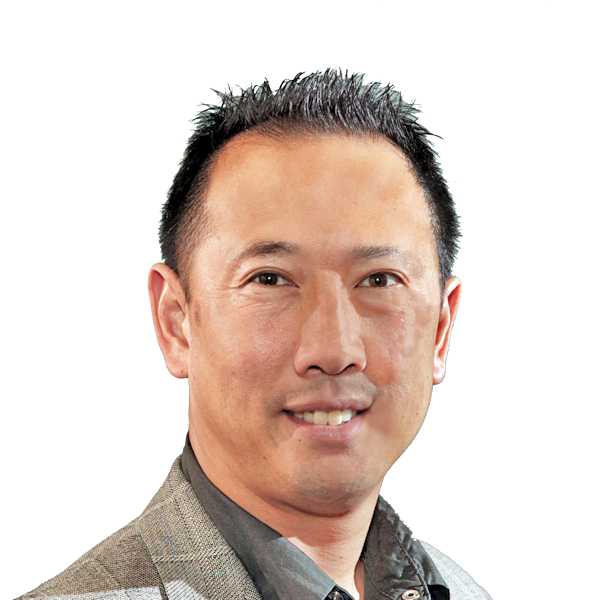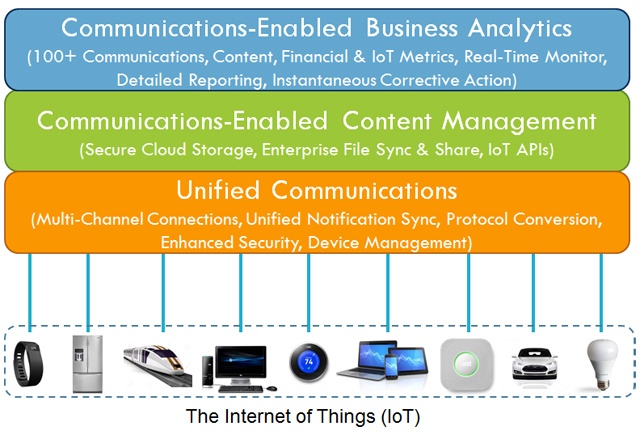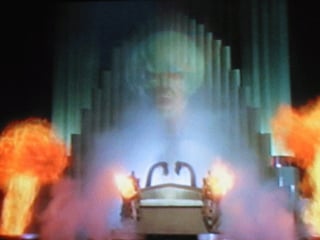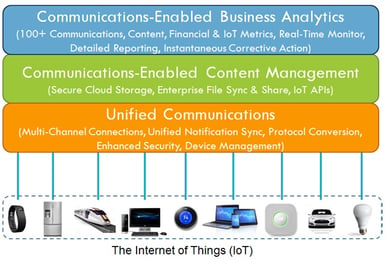Business IoT: Communications, Storage, Analytics... Oh My!

October 17, 2016


If you haven't heard, the Internet of Things (IoT) is coming and it promises to connect billions of every day devices to the Internet. But what infrastructure support will the Internet provide? Is your company prepared for IoT? How can your company take advantage of IoT? These are interesting questions and not just for the Wizard of Oz.
The Internet of Things (IoT) is about connecting everyday devices to the Internet so that they can communicate with humans as well as other devices and computers. This next era promises greater value and services to people and companies by allowing for the exchange and analysis of data in real-time. Consumers are already experiencing the Internet of Things when they purchase activity trackers such as a FitBit or automate their home heating and cooling with a Nest thermostat.
While consumers interact with IoT devices, these devices must interact with the Internet and more importantly a "back-end" infrastructure to store and analyze the data being transmitted by the IoT device. This back-end infrastructure today, is being created and managed by each individual IoT manufacturer. Virtually every back-end infrastructure has three key components:
- Communications - IoT's must communicate with their back-end since they generally have limited display capability, storage and processing power for analytics. They depend on communicating with the back-end to transmit their real-time data. Transmission is typically through either Bluetooth or Wi-Fi protocol but can be any wired or wireless protocol. Of course the back-end communications architecture must be highly scalable, secure and reliable as it will be interacting with millions of devices potentially at any given time. Also the communications infrastructure must support multiple protocols in order to interact with the most diverse IoT devices. Global notification and notification synchronization are also requirements allowing the back-end to notify other devices and humans of real-time or scheduled events.
- Storage - IoT devices by their very nature generate data... lots of data. Whether it's the number of steps you've taken in a day or the operating parameters of the compressor in your "intelligent" refrigerator, IoT devices are collecting and transmitting real-time data. Because it's constant and real-time, IoT devices need access to virtually unlimited storage. Cloud storage is ideal for IoT devices as it can provide that virtually unlimited storage as well as globally consistent, real-time access to the storage.
- Analytics - Once all the IoT device data is stored, it needs to be analyzed, interpreted and acted upon. This requires an analytics and notification framework to be in place so that customizable metrics can be measured, notifications can be sent and any necessary actions taken. This framework would ideally allow for both manufacturer as well as end-user to analyze the data and have a common notification system that can interface with various notification and synchronization protocols.
While first generation IoT device manufacturers have had to develop these IoT back-end infrastructures themselves, clearly, as more and more IoT devices become available, it makes sense to aggregate these back-end services into a common highly reliable, scalable unified cloud service. This is exactly what PanTerra offers for IoT device manufacturers. Instead of (or in addition to) maintaining their own back-end services, PanTerra is providing common cloud APIs to take advantage of their unified cloud services which include unified communications, cloud storage and unified analytics. PanTerra's cloud services deliver ultra-high levels of availability, reliability, scalability, security, service level agreement (SLA), Quality of Service (QoS) and support, making it the ideal back-end infrastructure for IoT devices. Let's take a look at the unique benefits of connecting IoT devices to the PanTerra back-end infrastructure:

- Unified Communications - PanTerra's unified communications infrastructure provides ultra-reliable, multi-protocol, QoS communications for IoT devices allowing a wide variety of devices to connect in real-time anywhere and at any time. In addition, PanTerra's global notification service allows IoT devices to notify multiple devices through multiple protocols and includes a synchronization mechanism to synchronize "new" and "read" messages across multiple devices.
- Cloud Storage - PanTerra's SmartBox cloud storage provides highly secure, unlimited cloud storage for IoT devices with flexible access control, sharing and multi-device synchronization and unlimited file versioning. Encryption in-transit and at-rest along with Multi-Factor Authentication (MFA) ensure IoT device data privacy and security.
- Unified Analytics - PanTerra's analytics framework provides all the necessary components to analyze, notify and take corrective actions on actionable events. With over 100 customizable performance metrics built-in and an analytics API that allows customized IoT analytic events to be monitored, a global notification and synchronization mechanism and full integration into the unified communications service, PanTerra's analytics framework provides an ideal analytics environment for IoT device manufacturers to develop on.
Taken together, PanTerra's back-end unified cloud services provide the ideal communications, storage and analytics platform for IoT device manufacturers. I'm excited and look forward to providing the back-end support for this next generation of Internet connected devices! If you're an IoT device manufacturer and want to develop on the PanTerra platform, please contact us at: info@panterranetworks.com.
.jpg?width=500&height=500&name=Are%20you%20Getting%20a%20Good%20Deal%20(1).jpg)
Comments